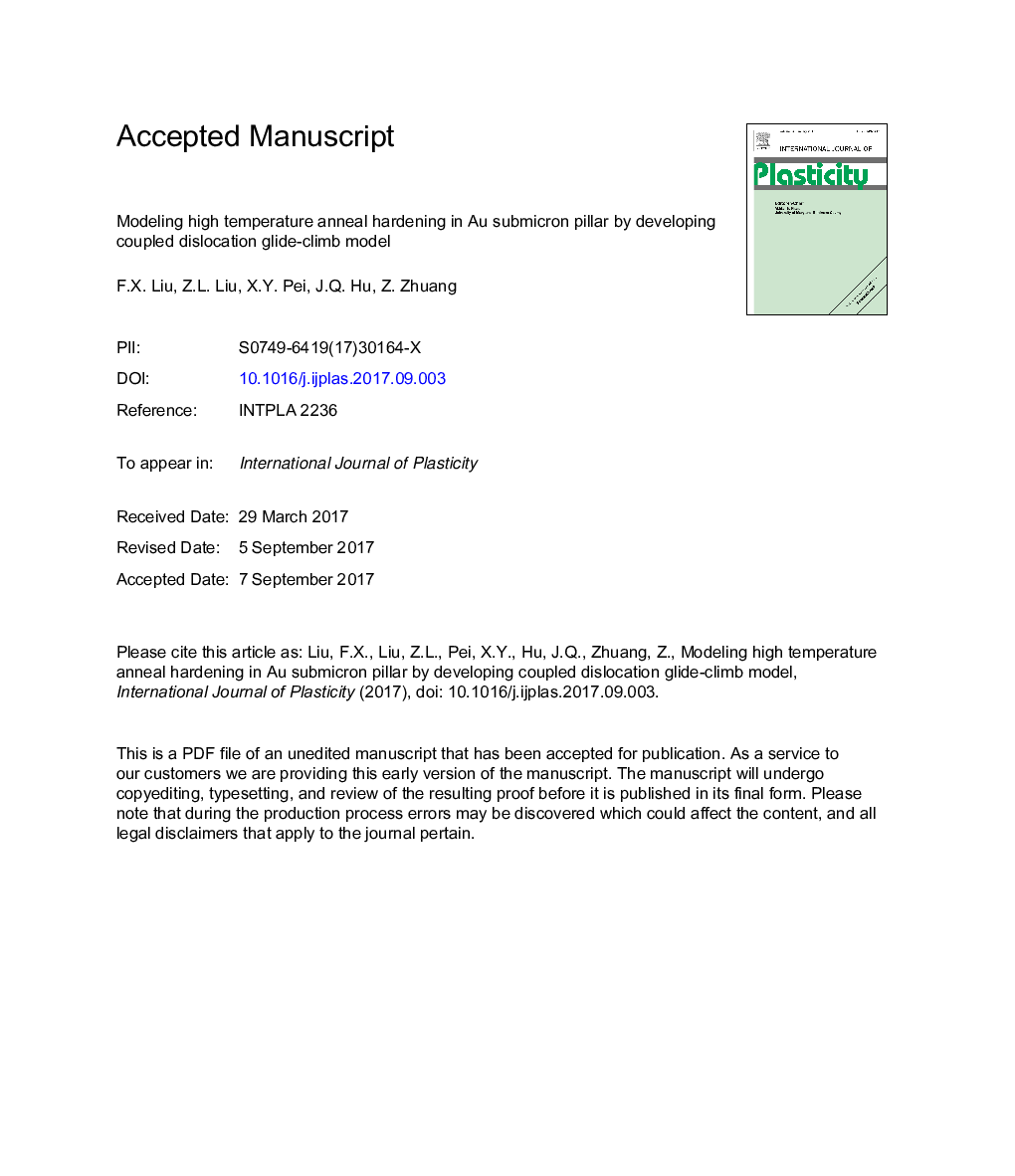| کد مقاله | کد نشریه | سال انتشار | مقاله انگلیسی | نسخه تمام متن |
|---|---|---|---|---|
| 5016641 | 1465574 | 2017 | 50 صفحه PDF | دانلود رایگان |
عنوان انگلیسی مقاله ISI
Modeling high temperature anneal hardening in Au submicron pillar by developing coupled dislocation glide-climb model
دانلود مقاله + سفارش ترجمه
دانلود مقاله ISI انگلیسی
رایگان برای ایرانیان
کلمات کلیدی
موضوعات مرتبط
مهندسی و علوم پایه
سایر رشته های مهندسی
مهندسی مکانیک
پیش نمایش صفحه اول مقاله

چکیده انگلیسی
Recent experimental studies have shown that metals at submicron scale may harden rather than soften after high temperature annealing, which is contrast to the typical behavior at macro level. In the present work, a coupled dislocation glide-climb model is developed to study the intrinsic mechanism of high temperature anneal hardening in the submicron pillar. Both thermally activated dislocation glide and climb are dealt with in the framework of three dimensional (3D) discrete dislocation dynamics (DDD). A modified discrete-continuous method (DCM) is proposed for solving dislocation climb. The climb rate is determined by the vacancy volumetric flux across the dislocation core which is obtained by solving vacancy diffusion equations using the finite element method (FEM). The vacancy concentrations are transferred between the solving domain of DDD and continuum FEM by a new localization method. Through carrying out coupled dislocation glide-climb simulation, remarkable softening effect after pre-straining and hardening effect after annealing is observed in the submicron pillars. Microstructure analysis demonstrates that the anneal hardening can be ascribed to two major aspects: (1) The dislocation climb during high temperature annealing promotes the dislocation annihilation, leading to a decrease of dislocation density; (2) The jogs, nucleated during annealing, which have very weak mobility, act as obstacles to dislocation glide motion and result in a decrease of mobile dislocation density. Compared with the pre-strained pillars, the combination effect of these two aspects significantly decreases the dislocation mobility and results in higher flow strength, which agrees well with the experiment data.
ناشر
Database: Elsevier - ScienceDirect (ساینس دایرکت)
Journal: International Journal of Plasticity - Volume 99, December 2017, Pages 102-119
Journal: International Journal of Plasticity - Volume 99, December 2017, Pages 102-119
نویسندگان
F.X. Liu, Z.L. Liu, X.Y. Pei, J.Q. Hu, Z. Zhuang,